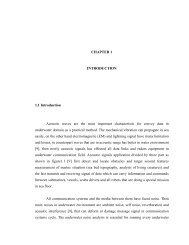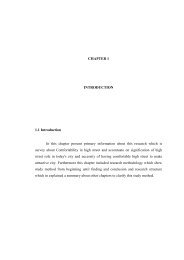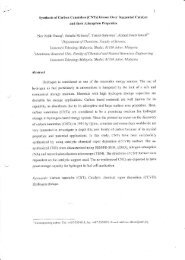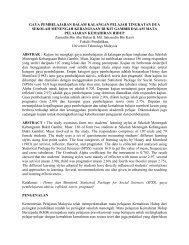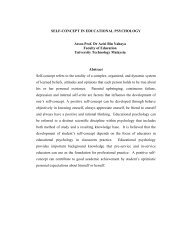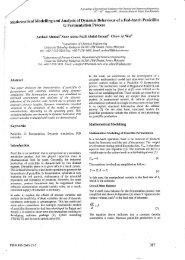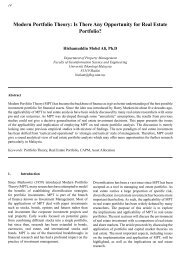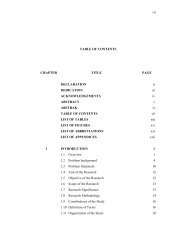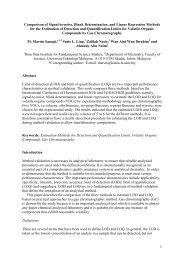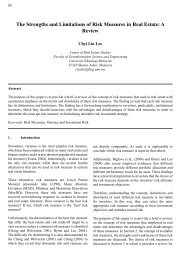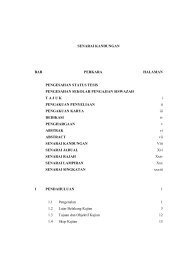Rational approach to the selection of conditions for diastereomeric ...
Rational approach to the selection of conditions for diastereomeric ...
Rational approach to the selection of conditions for diastereomeric ...
You also want an ePaper? Increase the reach of your titles
YUMPU automatically turns print PDFs into web optimized ePapers that Google loves.
1340 F. C. Ferreira et al. / Tetrahedron: Asymmetry 17 (2006) 1337–1348<br />
salt <strong>for</strong>mation (C > 1.5), but suggest that it is not so important<br />
<strong>for</strong> <strong>the</strong> region where neutral salt <strong>for</strong>mation takes place<br />
(C < 0.5). To follow this fur<strong>the</strong>r, specific calculations <strong>for</strong><br />
PEA and PPI2 are made in Figure 2c and d. Accounting<br />
<strong>for</strong>, or neglecting, acid–base equilibria does not affect <strong>the</strong><br />
predicted ee’s <strong>for</strong> a resolution based on <strong>the</strong> preferential precipitation<br />
<strong>of</strong> one <strong>of</strong> <strong>the</strong> neutral salts, as shown in Figure 2c<br />
<strong>for</strong> <strong>the</strong> case <strong>of</strong> PEA. However, considerably different ee’s<br />
are predicted by <strong>the</strong> different models (Fig. 2d) <strong>for</strong> <strong>the</strong> case<br />
<strong>of</strong> PPI2, where resolution is based on <strong>the</strong> difference in solubilities<br />
<strong>of</strong> <strong>the</strong> acidic <strong>diastereomeric</strong> salts. Consequently, it<br />
is concluded that <strong>the</strong> acid–base equilibrium <strong>of</strong> racemic<br />
amine and resolving diacid agent should be taken in<strong>to</strong> account,<br />
and from here onwards, model II will be employed<br />
in all calculations.<br />
Resolutions <strong>of</strong> both amines were per<strong>for</strong>med according <strong>to</strong><br />
<strong>the</strong> resolution pro<strong>to</strong>cols described at constant racemic<br />
amine concentrations, with varying amounts <strong>of</strong> resolving<br />
agent added <strong>to</strong> vary C. For both systems, <strong>the</strong> ee’s <strong>of</strong> both<br />
solid and mo<strong>the</strong>r liquor was measured, as well as <strong>the</strong> Y<br />
and mo<strong>the</strong>r liquor pH. The experimental and calculated<br />
results obtained are plotted in Figure 3a–d. These show<br />
a good relationship between predicted and experimentally<br />
measured values. Figure 3a shows a good match between<br />
ee <strong>for</strong> PEA except at C < 0.5; Figure 3c shows that <strong>for</strong><br />
PPI2, ee is well-predicted across <strong>the</strong> range <strong>of</strong> C, while<br />
Figure 3b and d shows that <strong>the</strong> model predictions <strong>for</strong> Y<br />
and pH both compare very well with <strong>the</strong> experiment <strong>for</strong><br />
both amines.<br />
PPI2 resolutions were per<strong>for</strong>med in ace<strong>to</strong>ne–water<br />
97:3 wt % at 5 °C with amine concentrations <strong>of</strong> 280 mM.<br />
The maximum ee <strong>for</strong> <strong>the</strong>se resolutions were found <strong>for</strong><br />
C > 1.5. Under <strong>the</strong>se <strong>conditions</strong>, (R)-acidic salt was <strong>for</strong>med<br />
at concentrations (140 mM) lower than its solubility limit<br />
(Ks AR = 361 mM) and so it remains completely dissolved<br />
in <strong>the</strong> mo<strong>the</strong>r liquor. The (S)-acidic salt has a low solubility<br />
limit (Ks AS = 12 mM), and hence, precipitation was observed.<br />
For 0.2 < C < 0.75, <strong>the</strong> (R)-PPI and (S)-PPI neutral<br />
100<br />
racemic amine:PEA<br />
50<br />
racemic amine:PEA<br />
12<br />
50<br />
0<br />
0 0.5 1 1.5 2<br />
Γ (mol.mol -1 )<br />
-50<br />
-100<br />
e.e. (cal)<br />
e.e. (exp)<br />
(a)<br />
e.e. ML (cal)<br />
e.e. ML (exp)<br />
100 racemic amine:PPI2<br />
50<br />
0<br />
0 0.5 1 1.5 2<br />
Γ (mol.mol -1 )<br />
-50<br />
-100<br />
e.e. (cal)<br />
e.e. (exp)<br />
(c)<br />
e.e. ML (cal)<br />
e.e. ML (exp)<br />
e.e. (%)<br />
e.e. (%)<br />
Y (%)<br />
(b)<br />
Y (%)<br />
(d)<br />
40<br />
30<br />
20<br />
10<br />
0<br />
50<br />
40<br />
30<br />
20<br />
10<br />
0<br />
Y (cal)<br />
pH (cal)<br />
pH (exp)<br />
0<br />
0 0.5 1 1.5 2<br />
racemic amine:PPI2<br />
Y (cal)<br />
pH (cal)<br />
Γ (mol.mol -1 )<br />
Y<br />
Y (exp)<br />
0<br />
0 0.5 1 1.5 2<br />
Γ (mol.mol -1 )<br />
Y (exp)<br />
pH (exp)<br />
Y<br />
pH<br />
pH<br />
10<br />
8<br />
6<br />
4<br />
2<br />
12<br />
10<br />
8<br />
6<br />
4<br />
2<br />
pH pH<br />
Figure 3. Comparison between experimental and modelling results. (a) and (b) show results <strong>for</strong> PEA and (c) and (d) <strong>for</strong> PPI2. Calculated results were<br />
obtained using model II and input parameters given in Table 1. (a) and (c) show <strong>the</strong> ee <strong>for</strong> (S)-enantiomer, <strong>of</strong> <strong>the</strong> obtained solids, and <strong>of</strong> <strong>the</strong> mo<strong>the</strong>r liquor<br />
(ee ML). (b) and (d) show <strong>the</strong> resolution yield, calculated as <strong>the</strong> percentage <strong>of</strong> (S)-amine obtained in <strong>the</strong> solid over <strong>the</strong> <strong>to</strong>tal racemic amine fed <strong>to</strong> <strong>the</strong><br />
resolution [amine] 0 .



